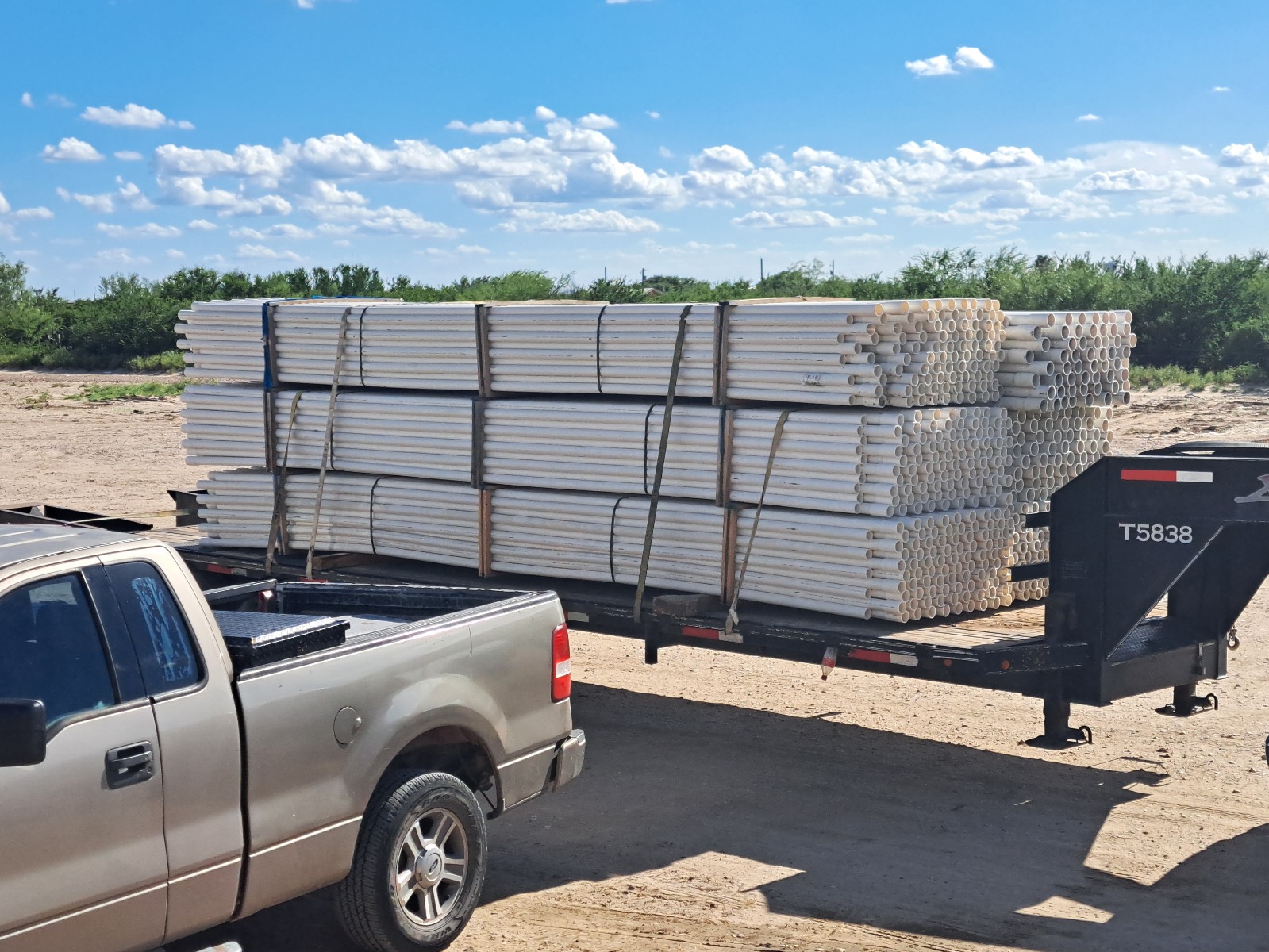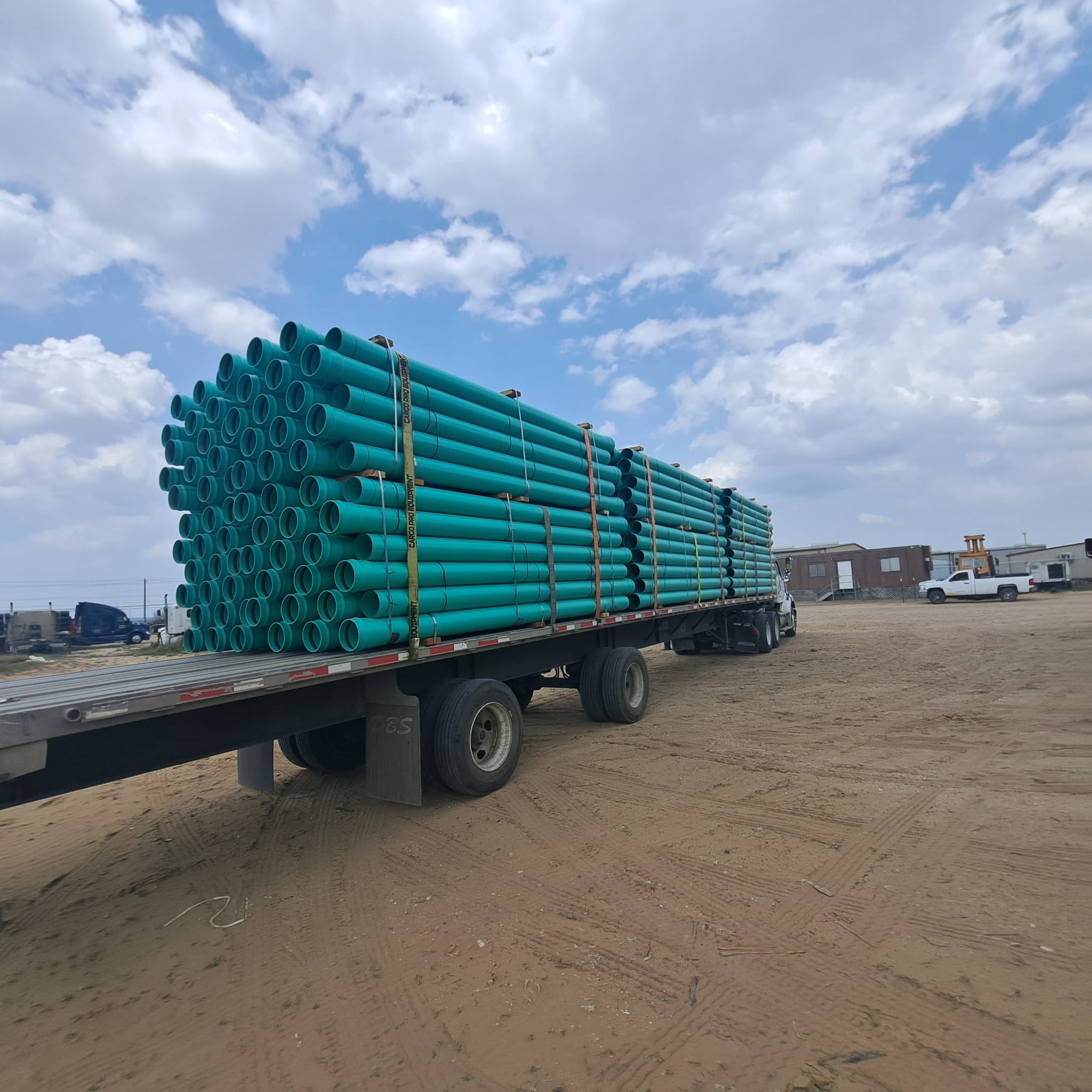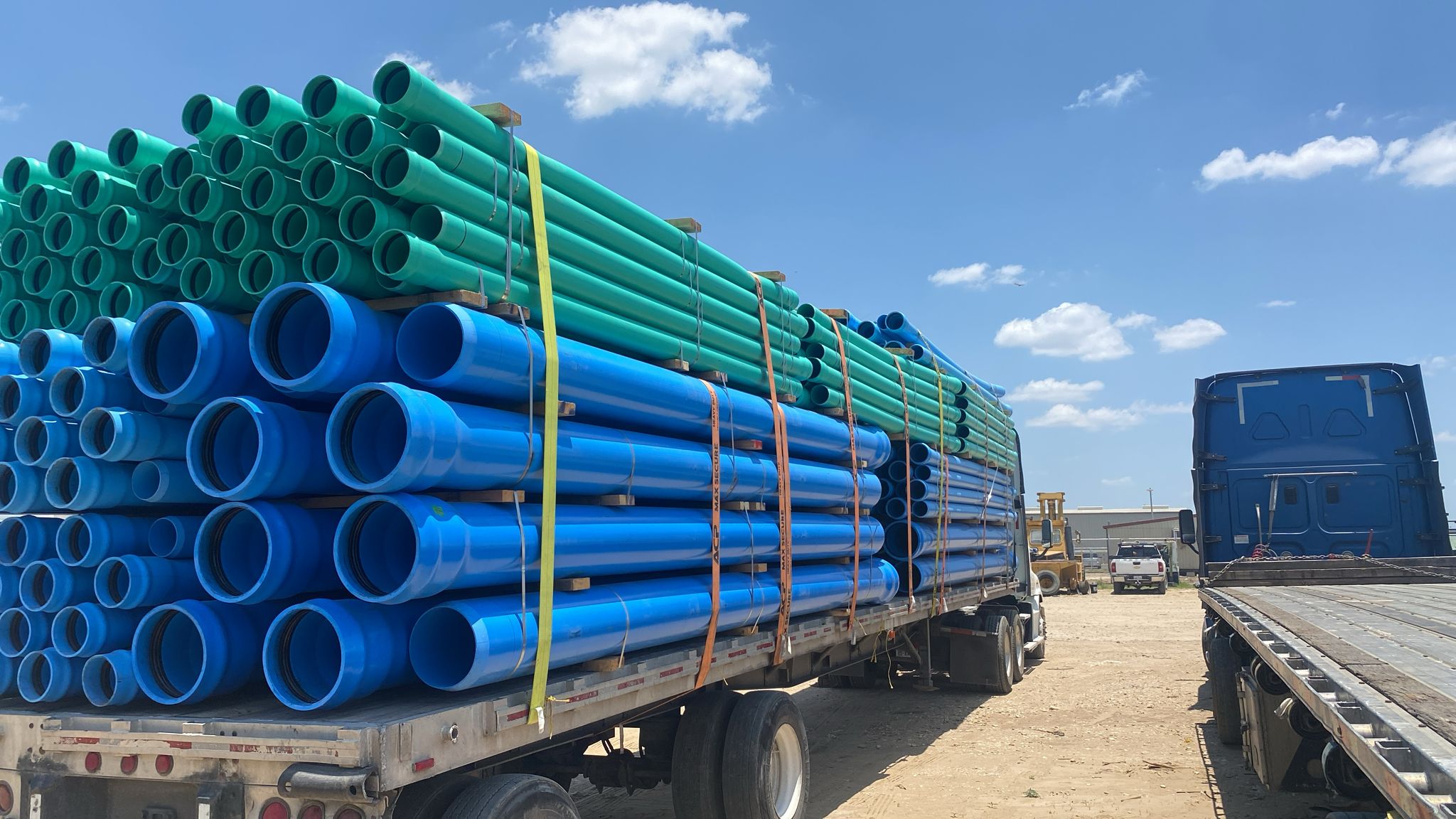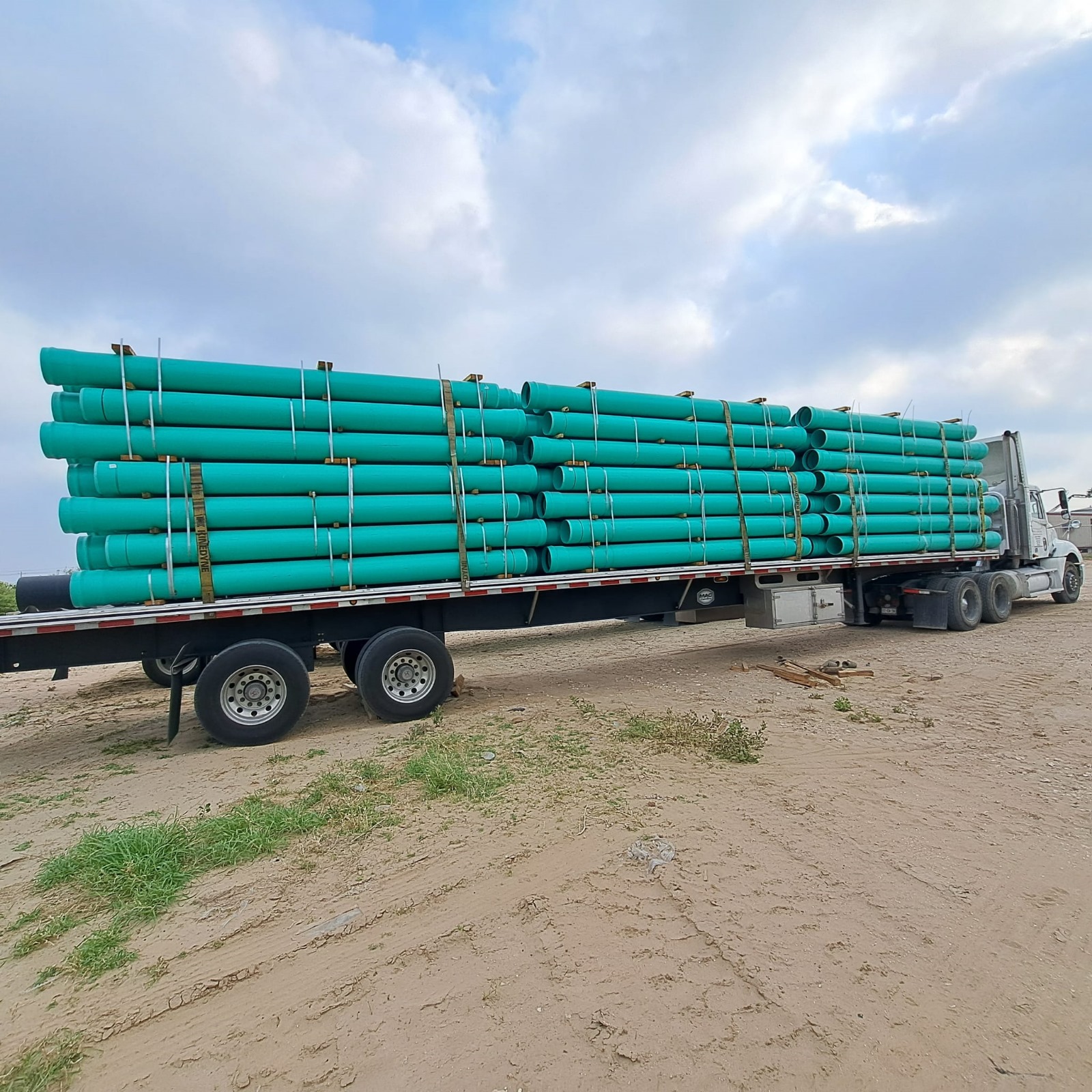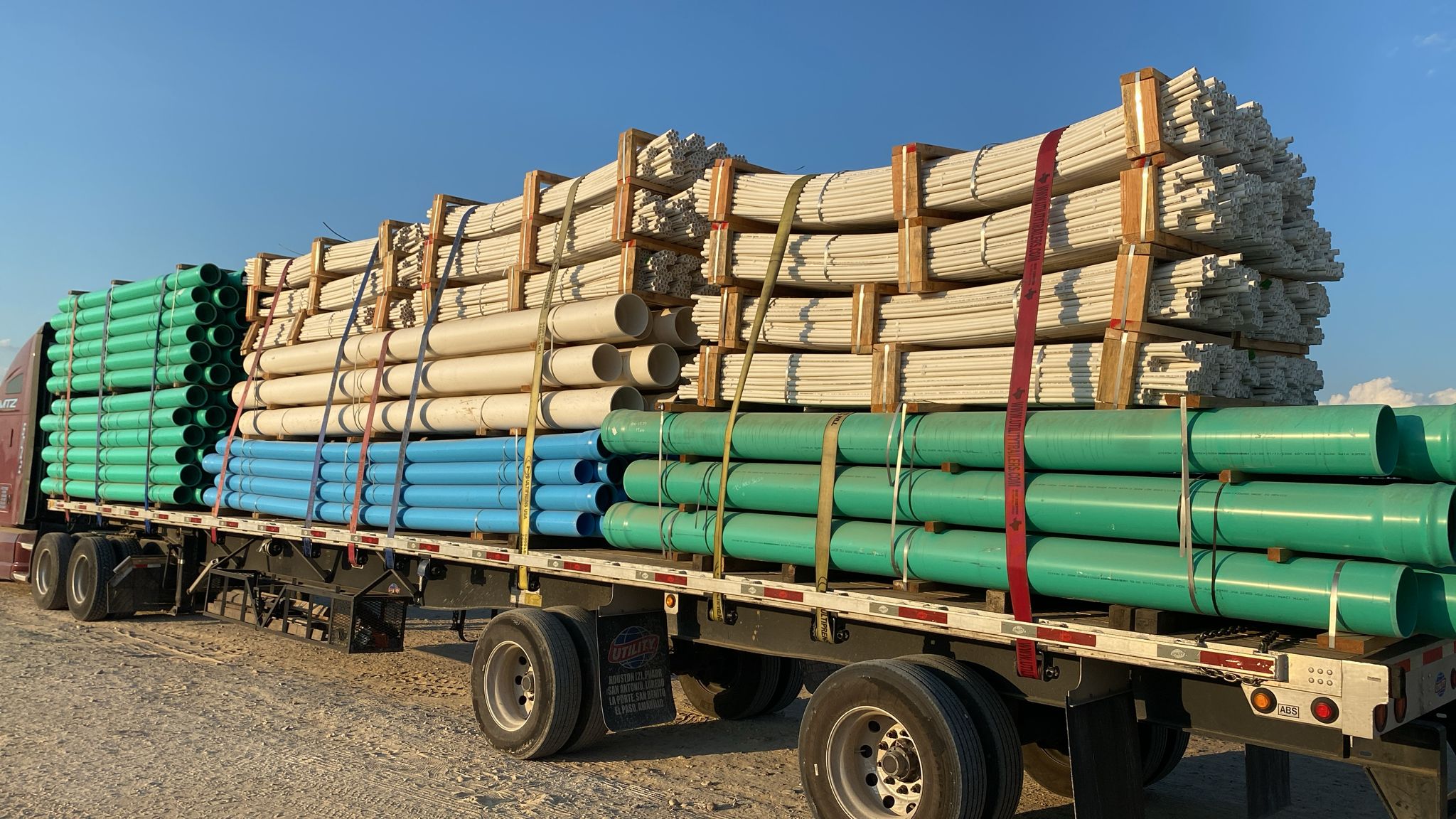PVC vs. Galvanized Steel Pipes: Why Texas Contractors Are Switching to Plastic
In the construction and infrastructure world, the materials you choose are just as important as your crew and design. For decades, galvanized steel pipe was the go-to standard across Texas—used in everything from municipal water systems to commercial buildings and agricultural operations. But as time goes on and new technologies evolve, PVC (polyvinyl chloride) piping has steadily taken its place.
At GP Distributors, we supply contractors and project managers across Texas, Louisiana, Oklahoma, and beyond with high-quality piping systems. In recent years, we’ve seen a noticeable surge in demand for PVC pipe, especially in applications that traditionally relied on galvanized steel.
Why the shift?
This blog dives into the key differences between PVC and galvanized steel piping, the factors driving the transition, and what Texas-based contractors should consider when choosing the right material for long-term performance.
A Quick Overview: What’s the Difference?
Galvanized Steel Pipe
-
Made of steel with a zinc coating to resist corrosion
-
Heavy and strong, but prone to rust over time
-
Often used in older plumbing and fire suppression systems
-
Requires threading and specialized fittings for connection
PVC Pipe
-
Lightweight, non-metallic, made from polyvinyl chloride
-
Completely corrosion-resistant
-
Easy to cut and join with solvent welding or gaskets
-
Available in Schedule 40 and 80, as well as pressure-rated classes
Why PVC Is Replacing Galvanized Steel in Texas
1. Corrosion Resistance in Harsh Texas Soil
Galvanized pipes are coated with zinc to prevent rust, but over time—especially in Texas’s variable soil conditions—they corrode internally and externally. PVC, on the other hand, is:
-
100% immune to rust
-
Impervious to most soil contaminants
-
Resistant to water-based chemical corrosion
-
Non-reactive with alkaline and acidic groundwater
In regions like Central and East Texas, where mineral-heavy soil accelerates corrosion, PVC dramatically outlasts steel.
2. Easier and Faster to Install
Steel pipe installation requires:
-
Threading tools
-
Heavier lifting equipment
-
Longer labor hours
-
Precision torque for fittings
PVC installation:
-
Uses hand tools
-
Requires less manpower
-
Installs faster, especially in long runs
-
Reduces project timelines significantly
Texas contractors working on tight commercial or municipal deadlines prefer PVC to stay on schedule and cut labor costs.
3. Weight Matters on Big Jobs
Galvanized pipe weighs significantly more than its PVC counterpart. For example:
-
2” galvanized pipe: ~3.65 lbs/ft
-
2” Schedule 40 PVC: ~0.68 lbs/ft
That weight difference:
-
Increases fuel and freight costs
-
Slows down onsite handling
-
Requires heavier-duty equipment for transport and lifting
For statewide distribution or large site work, PVC reduces overhead at every stage.
4. Longevity with Lower Maintenance
Galvanized pipe has a lifespan of 30–50 years, but:
-
Internal scaling reduces water flow over time
-
Hidden corrosion can lead to sudden failures
-
Replacement can be complex and invasive
PVC piping:
-
Often lasts 50+ years with no performance degradation
-
Requires virtually no maintenance
-
Doesn’t accumulate scale or mineral buildup
-
Is easily repairable with couplings or replacements
That long-term reliability is why PVC is now the top choice for:
-
Commercial water lines
-
Agricultural irrigation
-
Drainage and sewer systems
-
Residential plumbing upgrades
But What About Strength?
A common myth is that PVC can’t match steel’s strength. While it’s true that steel is stronger under compression or high impact, PVC’s structural strength is more than adequate for the vast majority of commercial and civil projects—especially with proper trenching and bedding.
PVC pipe also:
-
Comes in pressure-rated classes up to 315 PSI
-
Is available in Schedule 80 for extra wall thickness
-
Complies with AWWA and ASTM standards for pressure and load applications
In Texas applications like water distribution, drainage, or conduit runs, PVC’s structural integrity holds up—even under extreme heat, soil pressure, and UV exposure.
Price Breakdown: Steel vs. PVC
PVC isn’t just lighter and easier to work with—it’s also cheaper on nearly every metric.
| Factor | Galvanized Steel | PVC Pipe |
|---|---|---|
| Material Cost (2”) | $6–$10/ft | $1.50–$3.50/ft |
| Labor Cost | Higher (threaded) | Lower (solvent weld) |
| Freight Cost | High (heavy) | Low (lightweight) |
| Installation Time | Slower | Faster |
| Maintenance | Regular (rust, scaling) | Minimal |
| Lifespan | 30–50 years | 50+ years |
On multi-phase projects across Texas, switching to PVC can cut total pipe system costs by 30% or more.
Common Use Cases Where PVC Outperforms
🔹 Agricultural Irrigation
PVC handles long runs with minimal pressure drop, is resistant to fertilizer and mineral buildup, and doesn’t corrode underground. We supply countless farms and ranches across Texas with pressure-rated PVC for efficient, low-maintenance water delivery.
🔹 Underground Utilities
In Texas cities with aging galvanized infrastructure, municipalities are replacing pipes with C900 or SDR-rated PVC for municipal water mains and sewer lines. It lasts longer and installs easier in crowded utility corridors.
🔹 Commercial Plumbing
From schools to shopping centers, PVC is widely used for:
-
Water supply lines
-
Drainage and waste systems
-
HVAC condensate lines
-
Conduit for electrical and low-voltage systems
🔹 Residential Developments
Developers use Schedule 40 PVC for new home construction due to:
-
Quick installation
-
Long-term performance
-
Lower cost per unit
Environmental Impact: PVC Wins Here Too
Sustainability is more important than ever. Galvanized pipe production is:
-
Resource-intensive (mining, steel refining, galvanizing)
-
Heavier to transport
-
Energy-consuming in installation
PVC pipe:
-
Has a lower carbon footprint per foot of material
-
Is recyclable
-
Requires less energy to install and transport
-
Leaks less over time (due to fewer joint failures)
For Texas developers pursuing LEED certification or environmentally conscious design, PVC is the superior choice.
GP Distributors: Your Texas Source for Commercial PVC Pipe
At GP Distributors, we stock:
-
Schedule 40 and Schedule 80
-
SDR 21, SDR 26, SDR 35
-
C900 pressure pipe
-
PVC conduit and fittings
-
Solvent cement and installation tools
-
Full truckload and pallet-scale orders
📦 Fast delivery across Texas, Louisiana, Oklahoma, Arkansas, and New Mexico
📈 Consistent inventory—backed by long-term supplier relationships
🛠️ Knowledgeable team ready to match specs to your project’s needs
Whether you’re managing a single jobsite or overseeing statewide infrastructure contracts, GP Distributors has the volume, speed, and product expertise to keep you moving forward.
Final Thoughts: The Future Is Plastic
Galvanized steel had its time—but for Texas contractors looking to save money, install faster, and avoid future maintenance, PVC is the clear winner.
Need help making the switch? We’re happy to review your specs, compare pipe grades, and help you design a more cost-effective material strategy.
📞 Contact GP Distributors today for a quote
📍 Serving all of Texas and the surrounding region





